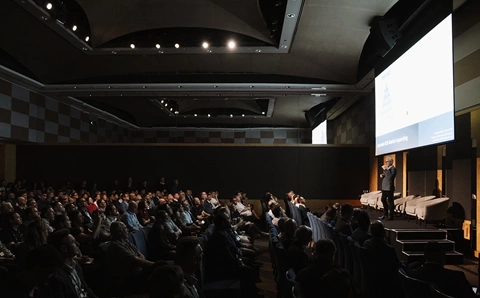It is vital we are all aware of the environmental impact we have on the earth. This includes monitoring the products we buy and sell and making sure they are as eco-friendly as possible.
Product stewardship is a concept Kyocera believes in. CRN spoke to David Finn, managing director of Kyocera to discuss the fact that every manufacturer should step up to the plate and take responsibility for their products at the end of their life cycle. “That’s something we’ve always felt responsible for and believe product ownership extends well beyond the initial marketing, sale and servicing of a product,” said Finn. “We have a responsibility to ensure we leave as small a footprint as possible.”
KyoCollect
Kyocera has been running a free recycling program, KyoCollect, to ensure the disposal of print consumables and re-manufacturing of wastes is done correctly. The program ensures that bottles, toner cartridges, fuser units, bulk toner or any consumable from any copier, laser printer or other office machine is recycled with a zero landfill outcome.
“In a further effort to curb the impact of our technology on the environment at the end of its life, Kyocera has removed hazardous materials from our latest products and implemented a totally lead-free manufacturing process,” explained Finn. This is a positive step in ensuring that the products Kyocera produces are being recycled as effectively as possible.
Leading the way
Kyocera recently provided a corporate client with more than 2000 new printers to replace their obsolete hardware, taking back the old equipment for recycling. “We believe Complete Take Back should be the policy for all manufacturers. This will hopefully encourage manufacturers to use environmentally safer components and consume fewer materials in the production process, design the product to last longer and not pass the cost of disposal to the government and taxpayer,” said Finn.
The cost of packaging
You can find mountains of packaging in landfills across the country. The Clean Up Australia website states that Australians use more than 1.3 million tonnes of plastic every year. At current rates of waste disposal it is expected that NSW will reach its present landfill capacity by 2010.
“Kyocera does not use any foam packaging. In fact our packaging is made from 100 percent recycled, all-paper construction, and uses only vegetable and soy dyes in the printing process. Actually, our packaging has won back-to-back awards at the Japan Packaging Contest, and like everything else in our range, can be recycled.”
The cost of transportation
Now let’s think about transportation for a moment. The environmental gains which can be made here are staggering. When you consider 75 percent of a vehicle’s fuel consumption is weight-based, it makes sense to travel light.
This highlights the importance of considering the packaging of the products we buy. The printer vendor has thought about this in depth. By reducing packing materials, they can fit more products into a truck, reducing the demand for truck trips. Heavier vehicles require more energy to move; so carrying around excess weight decreases fuel economy, leading to an increase in fuel consumption and greater CO² emissions.
“It’s not only Kyocera’s packaging which helps in this regard, it’s also our product design. Due to Kyocera’s ECOSYS technology, our printers only require the replacement of toner, and not the whole drum and other weighty components. It therefore takes far less fuel to service the supply and recycling of our products,” he said.
“If you think I might be drawing a long bow here, take the average weight of one of our toner kits – 200 grams. Compare that to the average weight of our competitors – about 1.5 kilograms! So you would get roughly the same fuel economy transporting seven of our toner kits to one of our competitors.”
According to Finn, if you multiply that by the 17 million toner cartridges which are consumed each year in Australia, that equates to a lot of diesel being burnt.
The Australian transport sector accounts for around 76 million tonnes of Australia’s total net greenhouse gas emissions, representing 13.5 percent of Australia’s total emissions. Any reduction in these levels would help improve our air quality.
Getting the message out
“Our key message to our resellers is if you want to help your clients help the environment, then there really isn’t a better alternative to Kyocera,” said Finn. “If you demonstrate Kyocera’s environmental credentials and use the tools we provide such as our Total Cost of Ownership calculator, then the technology will sell itself.”
To back that up, Finn says that if end-users require further proof, the company offers a free printer and copier audit to illustrate how using Kyocera ECOSYS technology can provide greater environmentally friendly practices, improved profitability and efficiency in the workplace.
Going green is important
By
Staff Writers
on Aug 30, 2007 9:47AM
Got a news tip for our journalists? Share it with us anonymously here.
Partner Content

Guiding customers on the uneven path to AI adoption

How Expert Support Can Help Partners and SMBs Realize the Full Value of AI

MSPs with a robust data protection strategy will achieve market success
.jpg&h=142&w=230&c=1&s=1)
New Microsoft CSP rules? Here’s how MSPs can stay ahead with Ingram Micro

Beyond the box: How Crayon Is Redefining Distribution for the Next Era






.jpg&w=100&c=1&s=0)
_(8).jpg&w=100&c=1&s=0)










